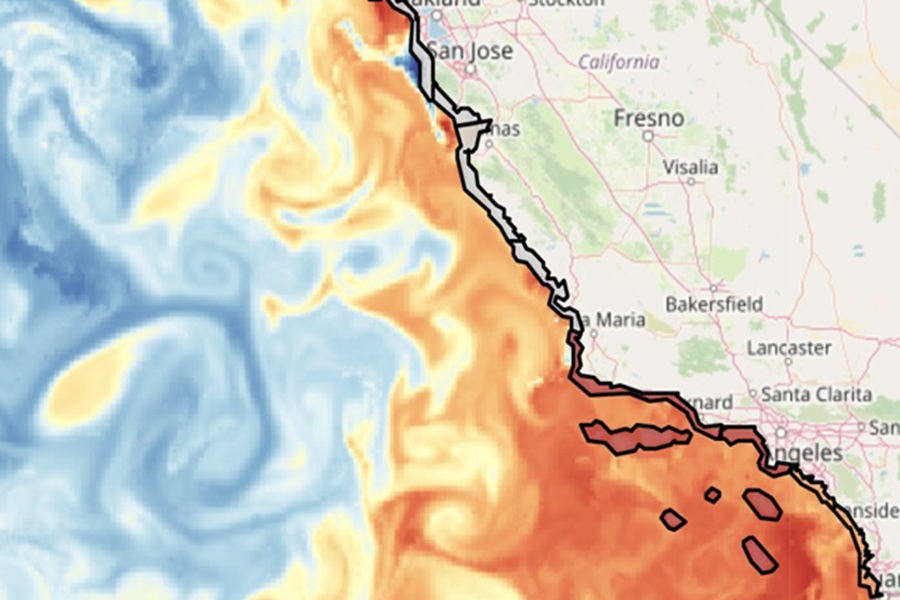
The weather and ocean currents are helping to drive a toxic blob of sorts up the California coastline, threatening marine life there. The Southern California Coastal Ocean Observing System (SCCOOS) reports that an “unprecedented multiple-toxin event” is under way, with a toxic harmful algal bloom (HAB) spreading from southern California to parts of central and northern California.
According to SCCOOS, there are two different types of marine algae present. Each produces a unique neurotoxin that can cause illness and death in marine mammals and seabirds and can also harm humans. The first is Domoic Acid (DA) which leads to amnesic shellfish poisoning; the second is Saxitoxin which leads to Paralytic Shellfish Poisoning (PSP).
This is the fourth consecutive year of major Domoic Acid-related marine mammal mortality events in southern California.
“This year’s HAB severity may be exacerbated by La Nina conditions, and potentially ash from recent Los Angeles fires,” SCCOOS wrote in an update on this severe event.
ENSO, short for El Nino Southern Oscillation, is a recurring climate pattern involving changes in the temperature of waters in the central and eastern tropical Pacific Ocean. On periods ranging from about three to seven years, the surface waters across a large swath of the tropical Pacific Ocean warm or cool by anywhere from 1°C to 3°C, compared to normal. This oscillating warming and cooling pattern, referred to as the ENSO cycle, directly affects rainfall distribution in the tropics and can have a strong influence on weather across the United States and other parts of the world. El Niño and La Niña are the extreme phases of the ENSO cycle; between these two phases is a third phase called ENSO-neutral. California is dealing with La Nina conditions now.
Though final counts are pending, California rescue centers report this DA event has caused more dolphin and seabird strandings than the past three years, and the potential exists for this year’s event to surpass all prior year events. In August 2022 which saw a significant HAB event, there were 100 animals reported to be impacted by the incident. For February and March of this year, the number is at 330 and counting.
The California Department of Public Health has issued a Shellfish Harvest Advisory in Santa Barbara due to PSP surpassing the critical safety threshold. People could be harmed if they consume shellfish from this area.
“High DA levels are detected at our shore stations and in animal samples,” SCCOOS wrote. “High toxin levels lead to larger numbers of strandings, deaths, and more severe neurological effects which have led to inadvertent attacks on humans.”